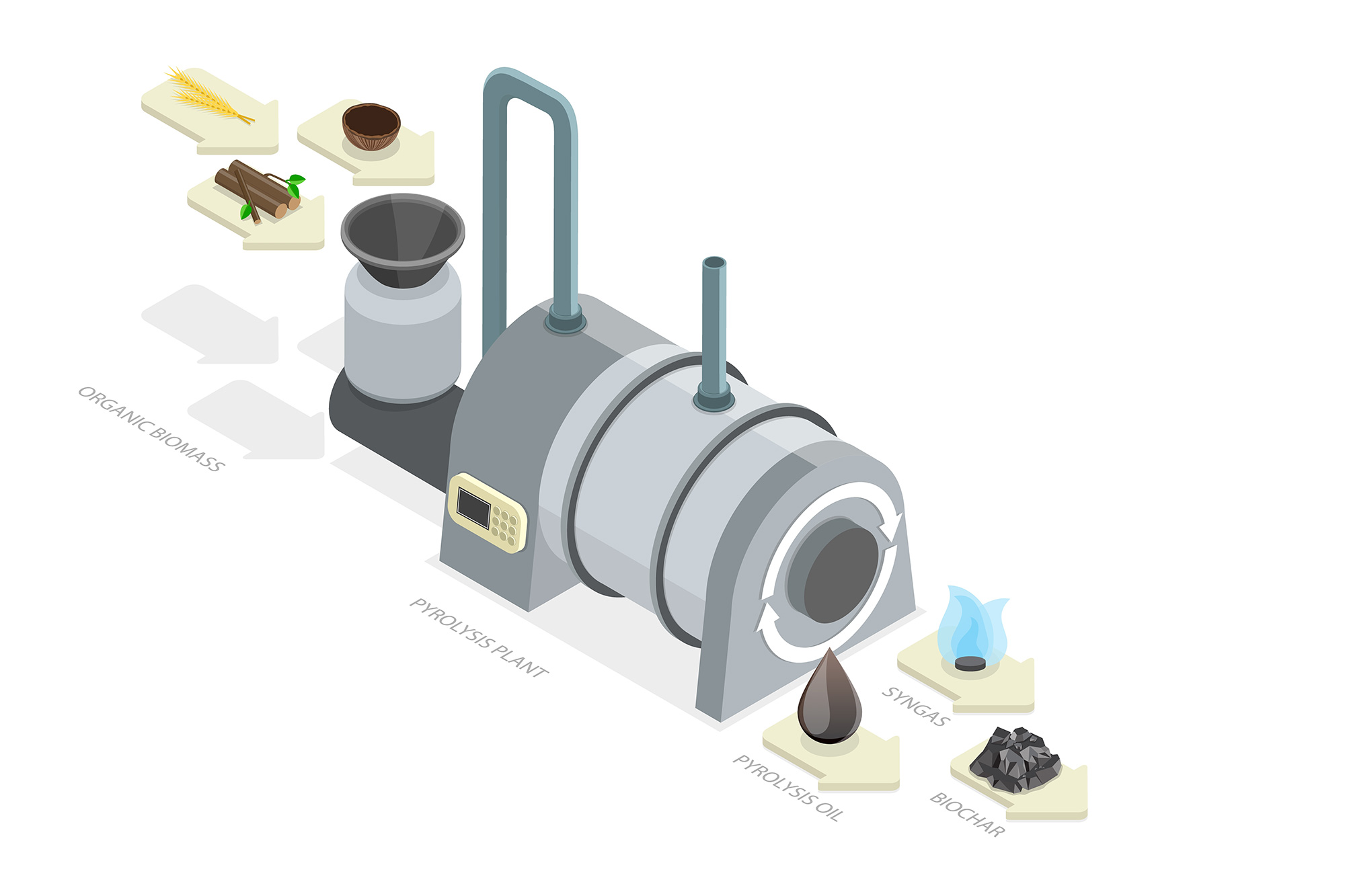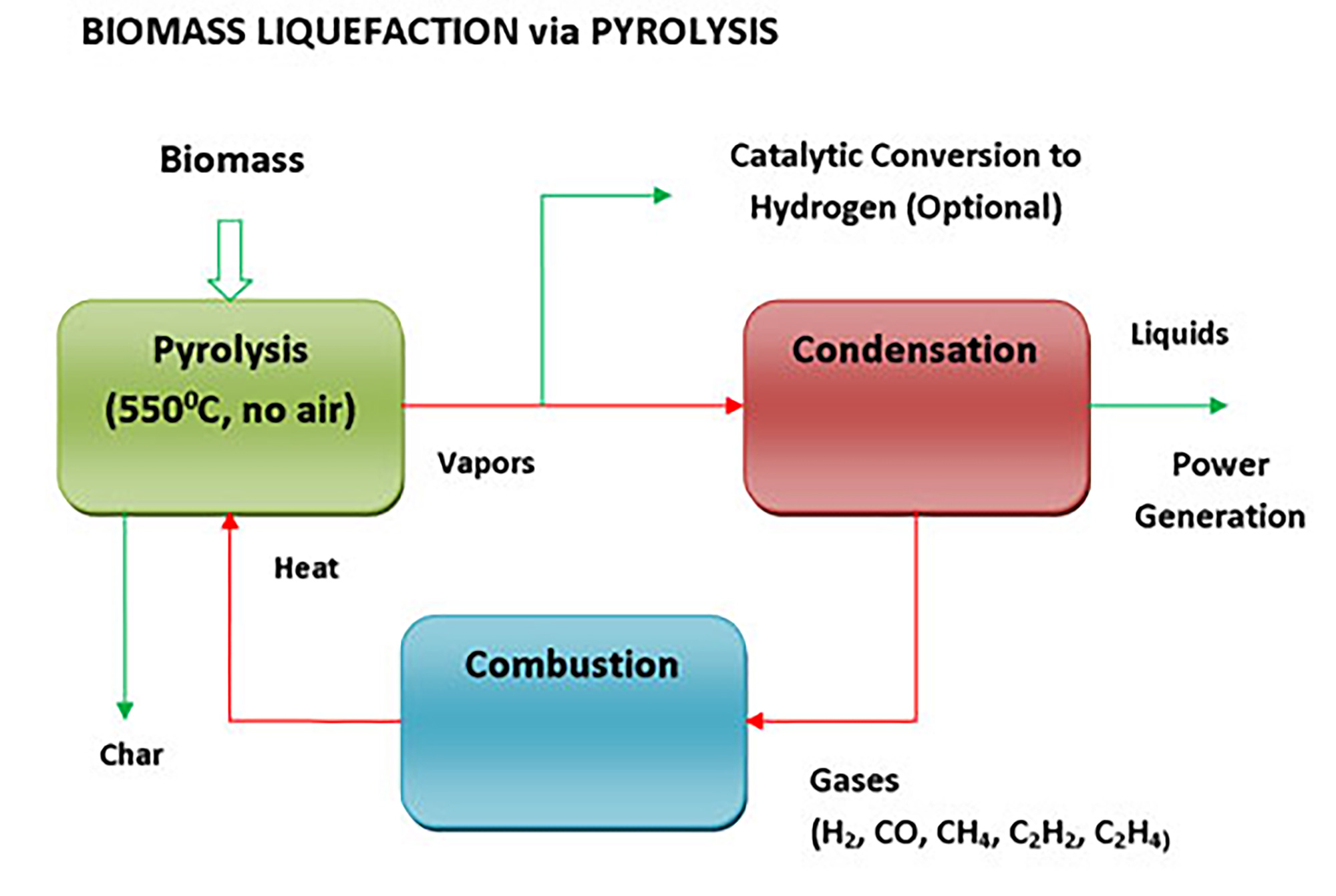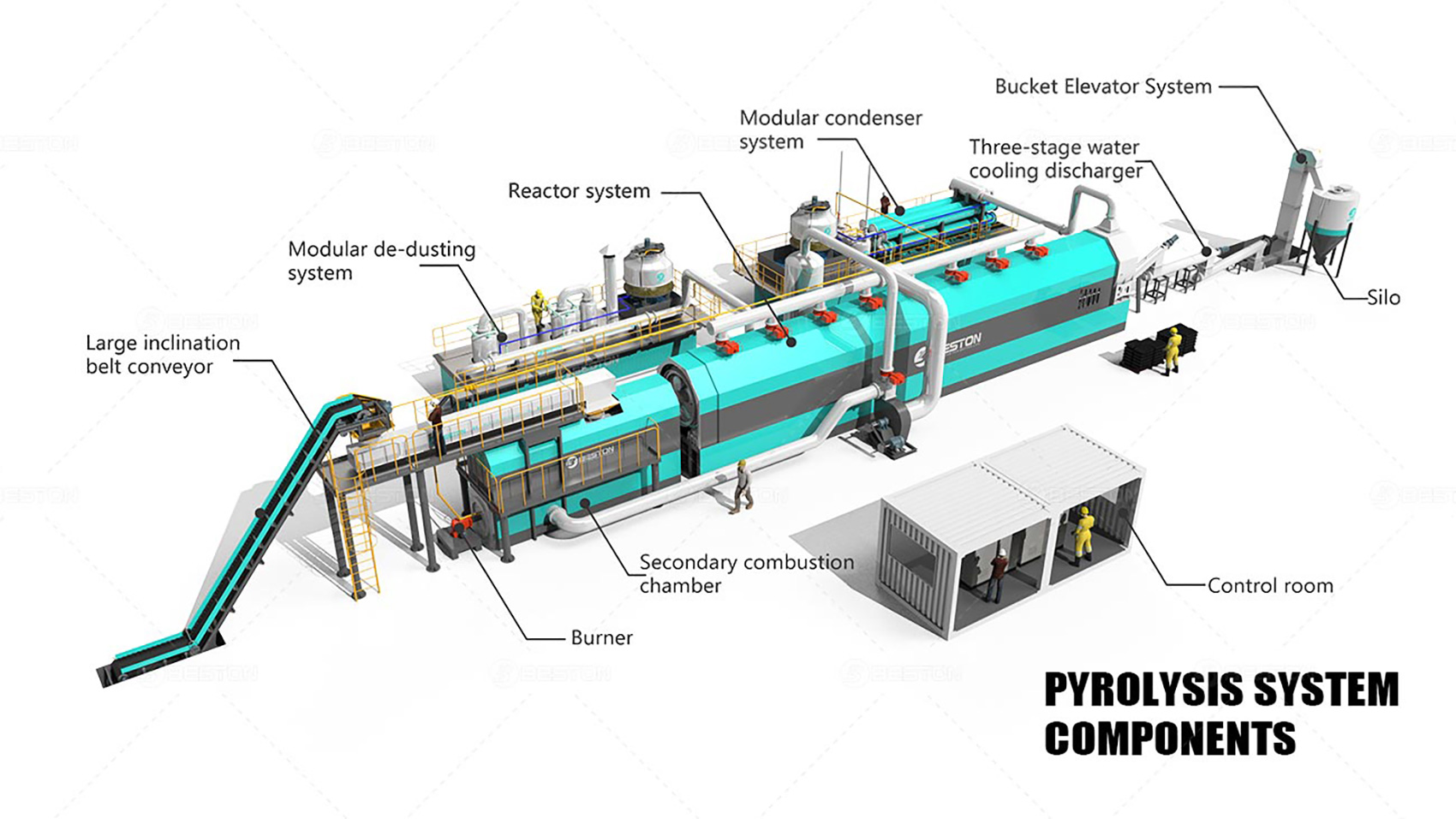
Biomass pyrolysis plant is a machine used to convert biomass materials into useful energy and chemical products. This technology involves pyrolysis of biomass at high temperatures and in an low-oxygen environment. The process involves breaking down the organic matter in the biomass, such as lignin, cellulose, hemicellulose. These organic substances decompose to form gaseous/liquid by-products, combustible gases, wood vinegar and tar. Thus, products such as biochar, syngas, wood vinegar and tar are produced in this process.

How Pyrolysis Works
The process involves heating biomass (such as wood, crop residues, or municipal waste) in a controlled environment devoid of air. This prevents combustion and allows for the thermal breakdown of complex organic compounds. Key stages include:
![]() Primary Reactions: Decomposition of lignin, cellulose, and hemicellulose into intermediate compounds.
Primary Reactions: Decomposition of lignin, cellulose, and hemicellulose into intermediate compounds.
![]() Secondary Reactions: Further conversion of intermediates into gaseous, liquid, and solid products.
Secondary Reactions: Further conversion of intermediates into gaseous, liquid, and solid products.
Benefits of Pyrolysis
![]() Environmental Impact: Reduces waste sent to landfills, mitigates greenhouse gas emissions, and recycles organic residues into useful products.
Environmental Impact: Reduces waste sent to landfills, mitigates greenhouse gas emissions, and recycles organic residues into useful products.
![]() Economic Advantages: Generates renewable energy sources, high-value byproducts, and reduces dependency on fossil fuels.
Economic Advantages: Generates renewable energy sources, high-value byproducts, and reduces dependency on fossil fuels.
![]() Flexibility: Capable of processing diverse feedstocks, from agricultural waste to electronic scrap.
Flexibility: Capable of processing diverse feedstocks, from agricultural waste to electronic scrap.
Pyrolysis Technologies and Reactors
Various reactor designs are utilized based on the desired product output and operational scale:
![]() Fixed-Bed Reactors: Ideal for slow pyrolysis, offering simple design and high char yields.
Fixed-Bed Reactors: Ideal for slow pyrolysis, offering simple design and high char yields.
![]() Fluidized-Bed Reactors: Used for fast pyrolysis, maximizing bio-oil production through efficient heat transfer.
Fluidized-Bed Reactors: Used for fast pyrolysis, maximizing bio-oil production through efficient heat transfer.
![]() Rotary-Kiln Reactors: Suitable for uniform processing of particulate materials.
Rotary-Kiln Reactors: Suitable for uniform processing of particulate materials.
![]() Microwave Pyrolysis Systems: Provide rapid, energy-efficient heating for bio-oil and syngas production.
Microwave Pyrolysis Systems: Provide rapid, energy-efficient heating for bio-oil and syngas production.

Applications of Pyrolysis
- Energy Production: Biomass conversion into bio-oil and syngas for heating and electricity.
- Waste Management: Efficient disposal of municipal, agricultural, and industrial waste.
- Carbon Sequestration: Utilization of biochar to enhance soil fertility and lock away carbon.
FAQs About Pyrolysis
- What is pyrolysis?
Pyrolysis is the thermal decomposition of organic materials in the absence of oxygen to produce biochar, bio-oil, and syngas. - How is pyrolysis different from combustion?
Unlike combustion, pyrolysis occurs without oxygen, preventing complete burning and producing valuable byproducts instead of ash. - What materials can be used in pyrolysis?
Biomass such as agricultural waste, forestry residues, and even electronic waste can serve as feedstock. - What are the primary products of pyrolysis?
Biochar (solid), bio-oil (liquid), and syngas (gas) are the main outputs, with applications ranging from energy to agriculture. - How does fast pyrolysis differ from slow pyrolysis?
Fast pyrolysis operates at higher temperatures and shorter residence times, primarily producing bio-oil, while slow pyrolysis focuses on biochar. - Is pyrolysis environmentally friendly?
Yes, pyrolysis reduces waste, recycles carbon, and offers renewable energy solutions, making it a sustainable process.
Why Choose Our Waste Treatment Solution?
![]() Sustainability: Diverts agricultural waste from landfills and open burning, reducing greenhouse gas emissions.
Sustainability: Diverts agricultural waste from landfills and open burning, reducing greenhouse gas emissions.
![]() Resource Recovery: Creates valuable by-products that support sustainable agriculture and energy needs.
Resource Recovery: Creates valuable by-products that support sustainable agriculture and energy needs.
![]() Eco-Efficiency: Reduces reliance on chemical fertilizers and fossil fuels while promoting a circular economy.
Eco-Efficiency: Reduces reliance on chemical fertilizers and fossil fuels while promoting a circular economy.
Explore this transformation in our blog:
The Role of Pyrolysis in Waste Management >>
